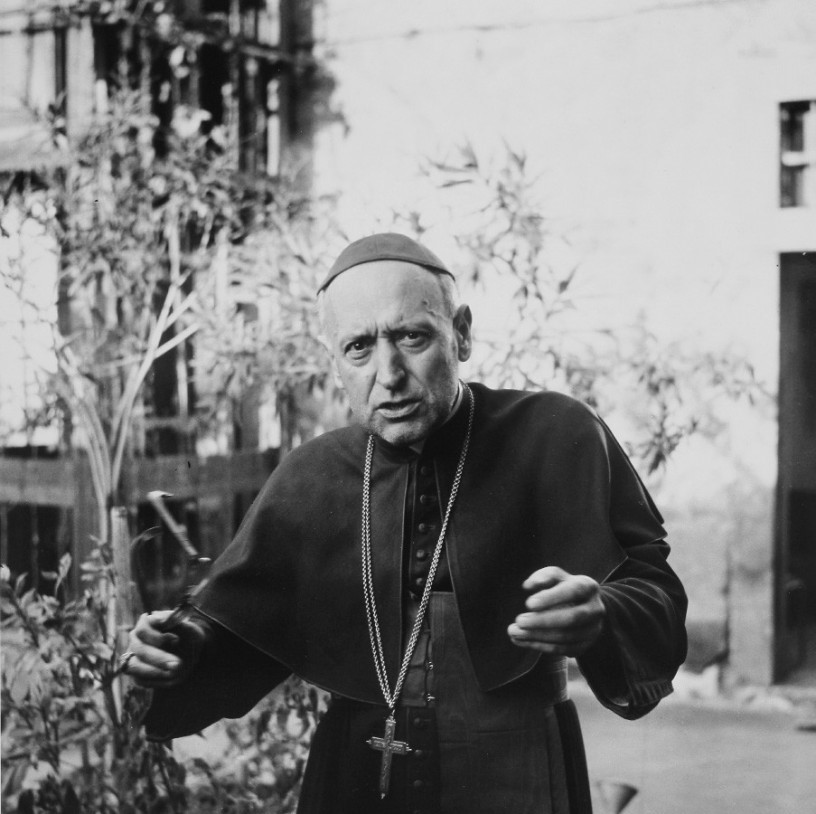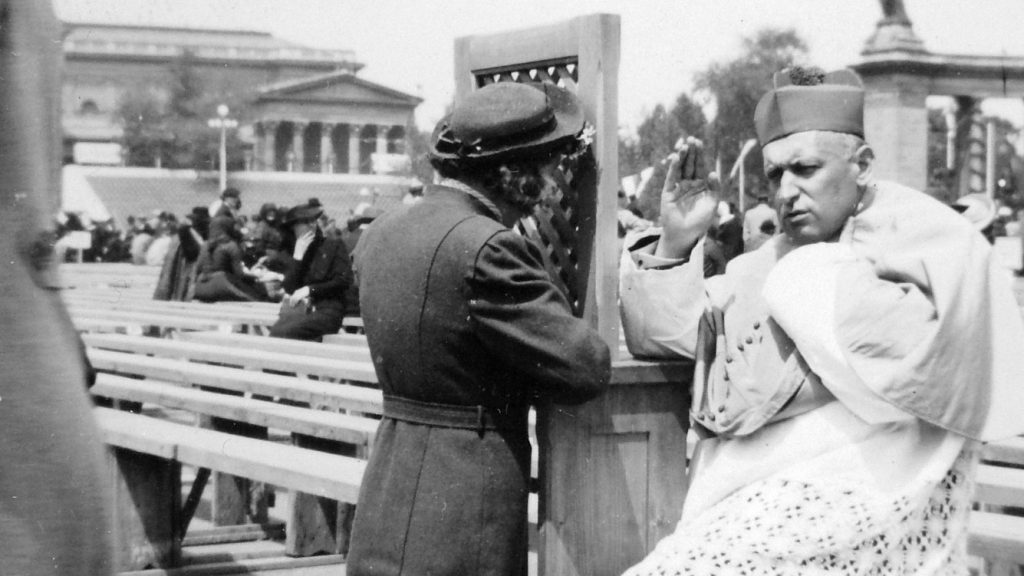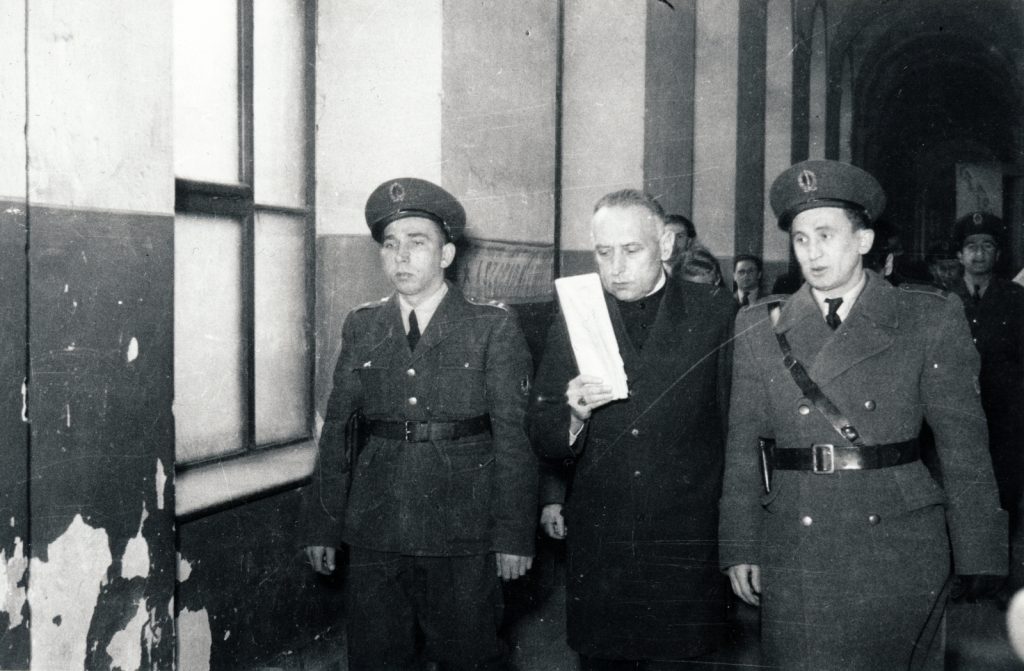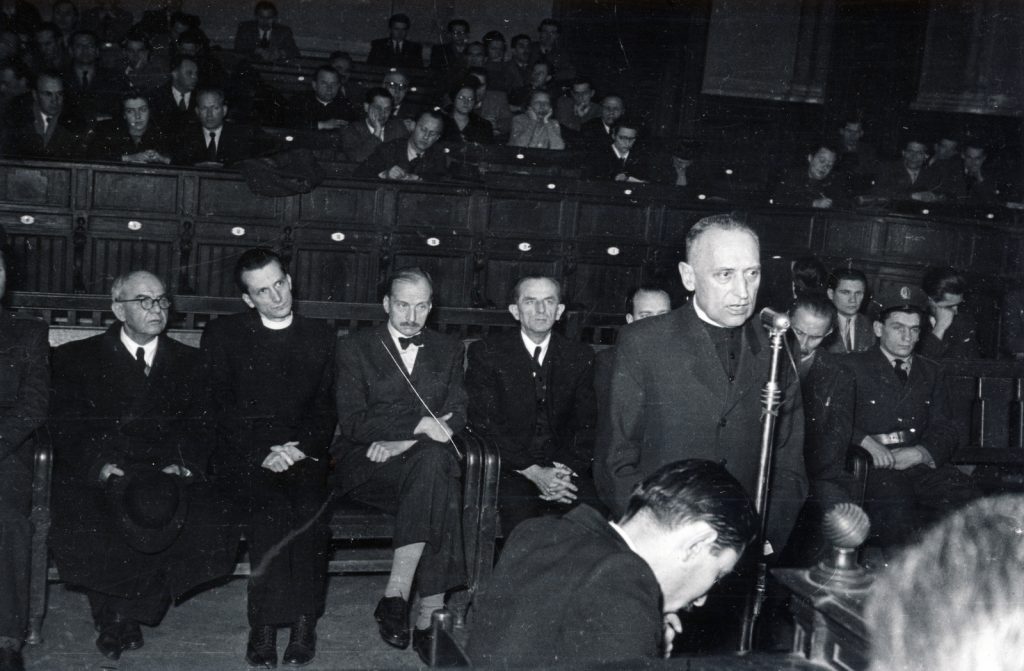
Cardinal Péter Erdő, Archbishop of Esztergom-Budapest, welcomed the publication of the decree, noting that Mindszenty can now officially be referred to as "venerable".Continue reading

Cardinal József Mindszenty, Archbishop of Esztergom and the last prince primate of Hungary, was arrested by Hungarian communists exactly 73 years ago on the second day of Christmas, on trumped-up charges of treason, conspiracy, and other offences. He was tortured, imprisoned, and suffered years of persecution, from both the fascists and communists during Hungary’s turbulent years of the 20th century, becoming the very symbol of the resistance against totalitarian tyranny. It was no coincidence that every oppressive regime hated him, for he adhered to his principles to the very end.
József Mindszenty was born in 1892 and was ordained a priest in 1915. The young cleric first had to face the revenge of those in power when he was arrested by the republican Károlyi government in 1919 for speaking out against its ‘socialist policies,’ and then arrested again by the communist Béla Kun government later the same year.
As a lifelong fighter against totalitarian tyranny, Mindszenty also opposed the fascist ambition of Horthy-era Prime Minister Gyula Gömbös and the Hungarian nazi movement (Arrow Cross party) in the 1930s.
In 1944, Pope Pius XII appointed him Bishop of Veszprém. He continued his political activism, and in the same year with several of his fellow bishops, he protested the persecution and deportation of Jewish people from Hungary. Not long after the coup and takeover of Hungary’s nazi Arrow Cross party, he was arrested and imprisoned, only released after the fall of the Hungarist, Nazi-ally, Szálasi government.

Budapest Heroes’ Square, World Eucharistic Congress, 1938. József Mindszenty hears a woman’s confession. Photo: Fortepan
After the end of WWII, it became increasingly clear that the communists were going to gain the monopoly of power in Hungary due to the Soviet occupation of the country. At the time, around 70 percent of the Hungarian population were Catholic, therefore, the Catholic Church had a significant influence on Hungary’s social, public, and political life as well as important material resources. As a result of this, the Hungarian Communist Party declared war on the churches of Hungary.
Mindszenty, who confronted the communist political leadership with increasing efforts, thus became a symbolic figure of anti-communist politics, but at the same time, a dangerous enemy of the Hungarian Regime.
The Archbishop often raised his voice against the steadily deteriorating public conditions and the unbridled terror of the communists’ political police. In January 1948, Mátyás Rákosi, the communist leader of Hungary, gave the order that ˝”…by the end of the year we must end the Church rebellion.” They introduced the concept of ˝clerical reaction˝ as well. Everyone from the Pope to the smallest village parish at once became a reactionary.
Mindszenty quickly found himself among the victims of the political reckoning, arrested on December 26, 1948, the second day of Christmas, on trumped-up charges of treason, conspiracy, and other offences.
The date of his arrest was not a coincidence; in fact, the communists wanted to send a message to the Hungarian clergy and even to the Holy See. Meanwhile, Hungarian prisons were filled with Catholic priests and the harassment of Catholics became an everyday occurrence.
After his detention, Mindszenty was transported to the infamous headquarters of Hungary’s secret police (ÁVH) at Budapest’s Andrássy Avenue 60. During his interrogation, the Cardinal was tortured and given various types of psychotropic drugs such as scopolamine, which was a common practice of the ÁVH.

Cardinal Mindszenty during his show trial in 1949, accompanied by guards. Photo: Fortepan/Tibor Bass
Mindszenty resisted for a long time, but as a result of a series of tortures, he finally confessed to a host of crimes, including the theft of Hungary’s crown jewels, planning a Third World War, and that once the war was won by the Americans, he himself would assume political power in Hungary.
The charges against him clearly had no grounds, but as a result of a show trial, he was sentenced to life imprisonment. It was only thanks to huge international outcry that he was not sentenced to death.

The show trial of Cardinal József Mindszenty and co-defendants in 1949.
Following his conviction, the Cardinal spent seven years in prison, after which he was transferred to house arrest in 1955 due to his health condition. During the Hungarian Revolution of 1956, Mindszenty was rescued from prison by freedom fighters. Hungary’s Prince Primate returned to Budapest the very next day and made an important radio speech in which he declared the revolution a ‘national freedom fight.’
He then returned to lead the Hungarian Catholic Church as Archbishop of Esztergom, and dismissed all church members from their office who had collaborated with the communist authorities.
However, when the Soviets invaded Hungary on November 4, 1956, Cardinal Mindszenty was forced to seek asylum at the United States embassy in Budapest where he had to spend the next 15 years of his life, unable to leave the grounds.
His admission was a strong political decision by the US, since under international law, embassies cannot grant asylum. Mindszenty remained active during his years at the embassy, writing several letters to senior American politicians informing them of the situation in Hungary. In August 1964, he even wrote a letter to then US President Lyndon B. Johnson regarding the Holy Crown of Hungary, which was kept in the US at the time. Mindszenty asked Johnson to protect the crown and keep it out of the hands of the communists.
As Mindszenty’s position became a source of increasing diplomatic tensions between the US and Hungary, Pope Paul VI offered a compromise and personally received then Hungarian Foreign Minister János Péter in 1971. It was the first time the Pope had met a serving member of any Communist government. According to the compromise reached at the meeting, he was forced to leave Hungary. Later Mindszenty was even stripped of his titles by the Pope, who declare him officially vacated, but refused to fill the seat while the former archbishop was still alive.
Mindszenty lived in exile in Vienna for another four years and died there in 1975 at the age of 83. Only after Hungary’s democratic transition were Mindszenty’s remains returned to Hungary and buried in the Esztergom Basilica in 1991.
Due to the courage he showed in his stance against the inhumane regimes of the last century, Cardinal Mindszenty is a widely admired figure in Hungary. To this day, his beatification and eventual canonization have been on the agenda of the Hungarian Catholic Church, ongoing goals which have yet to be reached.
In the featured photo: Cardinal József Mindszenty, gives a radio speech after his release from house arrest in 1956. Photo via Fortepan/Jack Metzger/Comet Photo AG